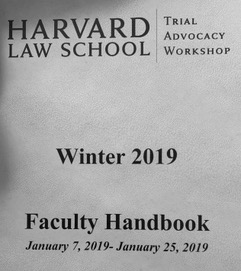New York’s Highest Court Changes Deportation Rules

The relationship between deportation and criminal law has always been rather difficult to define. But People v. Suazo provided some additional clarity.
Saylor Suazo was an undocumented immigrant in New York. In 2012, prosecutors charged him with various domestic assault counts. All these alleged crimes were Class A misdemeanors. Just before trial, the prosecutor reduced the allegations to CLass B criminal attempt charges. Over the defendant’s objections, the trial court allowed the reduction. Under CPL 340.40, defendants charged with Class B or lower misdemeanors are not entitled to jury trials. The judge convicted Mr. Suazo on all counts, and the government almost immediately began deportation proceedings against him.
There’s nothing in the record to indicate why prosecutors reduced the charges. Perhaps the evidence was weak and they did not feel comfortable going forward with Class A misdemeanor. But more than likely, the prosecutors wanted to bypass a jury trial and conclude the matter quickly.
The Decision
On appeal, Mr. Suazo argued that CPL 340.40 deprived him of his Sixth Amendment right to a jury trial, a right that was particularly important in criminal cases that involve potential deportation. An appeals court rebuffed his arguments, holding that deportation was a collateral consequence of criminal conviction.
In a 5-2 decision, the New York Court of Appeals reversed that conclusion. Writing for the majority, Judge Leslie Stein disputed the collateral consequence label. It’s technically correct that deportation is a civil proceeding unrelated to the criminal case, she admitted. But the reality is that “‘removal is practically inevitable. . .for noncitizens convicted of particular classes of offenses.’” Moreover, she noted that deportation does not just mean separation from friends and family. In fact, “Detention — which closely resembles criminal incarceration — may last several days, or it may last months or years,” she wrote.
In 2017, according to statistics cited by the court, ICE made 142,000 detention requests following criminal convictions, a number that has increased significantly since 1996.
Two judges filed dissenting opinions. Judge Michael Garcia warned that the decision could have unintended consequences that result in significant delays. Judge Rowan Wilson argued that deportation, while severe, is insufficient to trigger the Sixth Amendment.
What the Decision Means
In general, the government can deport noncitizens convicted of any serious felonies or crimes of moral turpitude. CMTs are typically offenses that have a criminal intent, like assault. The complex rules have many loopholes, limitations, and exceptions. So, if you are a noncitizen, it’s critical to discuss this element of your case with your criminal attorney.
As a brief side note, deferred adjudication usually counts as a conviction for deportation purposes.
Suazo gives defendants additional leverage in these situations. A bench trial may require less than an hour, but a jury trial is usually all-day affair, at the minimum. Many prosecutors do not want to invest the additional time. So, they are often willing to discuss a plea to non-CMT or serious felony charges.
Jury trials also inject an element of uncertainty into the process. There is no way to tell what a jury will do. Even if the evidence against the defendant is overwhelming, the jury may still acquit the defendant. If the defendant is sympathetic and there is any flaw in the evidence, the defendant’s chances for an acquittal are usually better than even.
Resource:
courthousenews.com/wp-content/uploads/2018/11/immig-misdemeanor.pdf
https://www.lindakenneybadenlaw.com/police-scuffle-ends-with-child-endangerment-charges/












